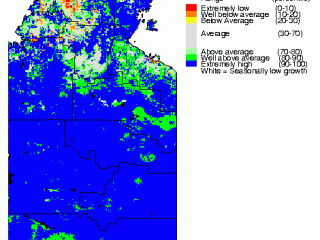 How the Australian cattle market will absorb the hundreds of thousands of cattle that could now be diverted onto eastern or southern markets following Tuesday’s live export ban to Indonesia remains a key question for the industry.
How the Australian cattle market will absorb the hundreds of thousands of cattle that could now be diverted onto eastern or southern markets following Tuesday’s live export ban to Indonesia remains a key question for the industry.
There were few to no immediate effects at cattle markets across the eastern states yesterday, but market analysts say the consequences of the sudden decision will take weeks and months to play out.
Most northern producers were “still in shock and lifting themselves up off the floor”, Road Trains Australia’s Brook Hartley said yesterday.
The timing of the suspension was particularly devastating for the northern cattle industry.
It came just as the dry season mustering and marketing period was it its busiest point, and at the height of Indonesia’s annual cattle import season in the approach to the Ramadan Muslim religious festival in August.
The dry season usually provides an eight month window of opportunity for cattle producers to muster, brand and consign cattle to market before the next wet season begins and halts cattle movements until the next season.
Prolonged wet weather this year pushed the start of the mustering season back to the end of April, meaning many stations had just one month to market cattle and generate annual cash flow before the suspension was imposed.
It is also likely that by the time the suspension is lifted, the vast majority of cattle that would have been suitable for the market will exceed the weight limits required to qualify for the market. Indonesia last year introduced a weight limit of 350kg per head on cattle imports as part of its push to limit imports and to foster self-sufficiency in Indonesian beef production.
The wetter than average season last summer meant many northern cattle have been on green feed since last October, which had already led to higher turn-off weights this year.
Australia’s live export industry expected to export about 500,000 cattle to Indonesia in 2011, in line with annual quota restrictions introduced by the Indonesian Government under its self-sufficiency program.
May export figures from the Northern Terrtiroy Government show that 115,330 cattle have been exported out of Darwin to Indonesia so far this year (55,278 in April and May of 2011). May data is not yet available from other ports such as Fremantle, Broome, Wyndham and Townsville, but shipments from those ports would have accounted for tens of thousands to Indonesia as well this year.
How the potentially hundreds of thousands of younger cattle that would normally have gone to Indonesia but will now likely go east or south will affect overall market dynamics remains to be seen.
While the recent prolonged wet season caused difficulties for producers in getting cattle to market and within specifications, the grass it brought will provide some scope for producers to keep cattle for longer now that the suspension has been imposed. Had the ban occurred in a dry year, options for producers would have been even fewer.
At the Charters Towers cattle market yesterday, Jim Geaney from Geaney’s, Charters Towers, said there was no immediate effect on market conditions.
Bullocks and heifers sold to firm prices, cows were dearer and weaner steers sold to over $2/kg.
“It was a good solid strong market, and it was coming off the back of a strong 3000 head store sale last Friday.”
After sales further south yesterday at Dalby, Casino, Singleton, Wodonga, Leongatha, Warnambool and Mount Gambier. the Eastern Cattle Young Indicator closed at 385.25c, a rise of 0.75c on Tuesday's close.
Mr Geaney said the widespread availability of grass this year was a big advantage.
“We have got a lot of more depth into where cattle can be marketed at the moment, especially store cattle into other areas where they have got plenty of feed.”
Jim Willoughby, who manages the Bohning cattle yards in Alice Springs, which serves as a transit facility for northern cattle moving south, said it was likely the yards would see a lot more activity in coming months.
“Half the country is still in shock yet so we won’t know what effect this will have for probably a fortnight or three weeks.
“Most of the cattle in this area around Alice Springs go to the southern trade, but in saying that, without that export money, it puts a base on everything, so that will be the biggest problem.”
